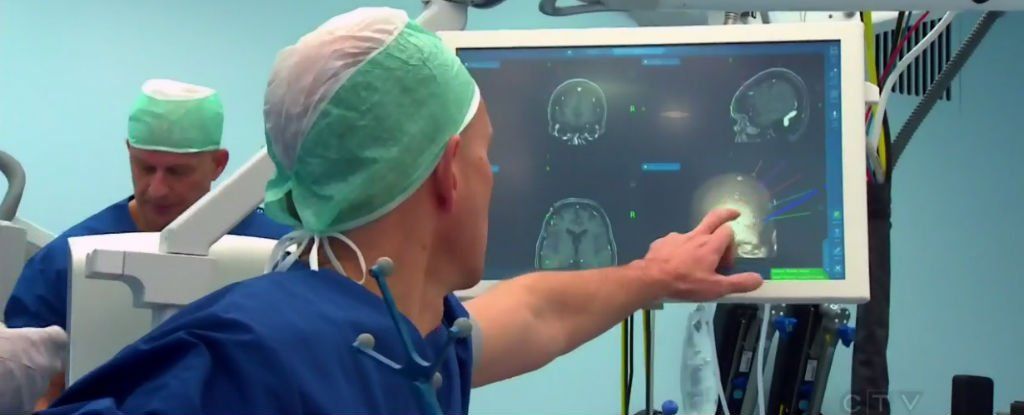Page 10682
Nov 14, 2016
Russian Researchers Learn How to 3D Print Bullets
Posted by Klaus Baldauf in categories: 3D printing, military
A collaboration between Russia’s Foundation for Advanced Research Projects and the Central Scientific – Research Institute for Precision Machine Engineering known as TSNIITOCHMASH has produced 3D printed bullets.
The Foundation formed in 2012 serves as an advanced research facility for military projects, an equivalent of the American DARPA. The project, conducted by the Foundation’s Laboratory of Additive Technologies and Design materials used selective laser melting technology to create an experimental batch of bullets. This same batch of bullets was then successfully fired.
According to the head of the laboratory, Doctor of Physical and Mathematical Sciences, Professor Vladimir Chuvildeeva, the current development team was formed more than ten years ago at the University of Nizhni Novgorod. The team has become specialized in developing laser alloying technology to develop complex physical models. Their end goal is being to develop equipment much more sophisticated for military purposes.
Continue reading “Russian Researchers Learn How to 3D Print Bullets” »
Nov 14, 2016
Technology that Counters Drone Swarms
Posted by Klaus Baldauf in categories: drones, energy, military

https://youtube.com/watch?v=E18uhfTB9lY
Lockheed Martin engineers are collaborating with customers and academia to research, develop and implement the technology that will detect and defeat swarms.
“We are currently developing a 60-kilowatt system that combines multiple fiber lasers to generate the high power weapon beam,” said Rob Afzal, senior fellow with Lockheed Martin’s Laser and Sensor systems division.
Nov 14, 2016
We’ve Figured Out How to Program Living Cells
Posted by Elmar Arunov in categories: bioengineering, biotech/medical, evolution, genetics
In Brief:
Researchers at MIT have developed an easy-to-use “biological programming language” that allows genetic engineers (or just about anyone) to design biological circuits and “hack” the genomes of living cells.
The evolution of human technology has proceeded in lockstep with the biological evolution of our species. For millions of years we were content with our primitive Oldowan choppers and Acheulean bifaces; in the Neolithic, we started playing with more sophisticated tools, and the Bronze and Iron ages followed in quick succession.
Continue reading “We’ve Figured Out How to Program Living Cells” »
Nov 14, 2016
This World-First Brain Implant Is Letting a ‘Locked-In’ Woman Communicate
Posted by Shane Hinshaw in categories: biotech/medical, computing, neuroscience
A paralysed woman in the Netherlands is the first to be fitted with a new type of brain implant that allows patients who cannot speak or move to communicate using nothing but their thoughts.
The new implant, which works with a computer interface to help her spell out words and sentences, can be used anywhere, allowing her to communicate with people in the outside world, without medical experts on hand to help.
“This is a world first,” neuroscientist and lead researcher Nick Ramsay, from the University Medical School Utrecht, told CNN. “It’s a fully implantable system that works at home without need for any experts to make it work.”
Continue reading “This World-First Brain Implant Is Letting a ‘Locked-In’ Woman Communicate” »
Nov 14, 2016
The Future of Deep-Learning—Nvidia Unveils Chip With 15 Billion Transistors
Posted by Elmar Arunov in categories: futurism, robotics/AI
The Tesla P100 represents a large departure for Nvidia, a company that has focused almost solely on developing chips for workstations and gaming rigs. With the P100, Nvidia is setting their sights on data centers and deep-learning technology.
This is a huge risk as it involves the development of many other things, like a new architecture, new interconnect, and new process, all of which went into the creation of the Tesla P100.
“Our strategy is to accelerate deep learning everywhere,” said Huang.
Continue reading “The Future of Deep-Learning—Nvidia Unveils Chip With 15 Billion Transistors” »
Nov 13, 2016
Physicists Just Discovered a Second State of Liquid Water
Posted by Shane Hinshaw in category: physics
It’s one of the most fundamental compounds on Earth, and it makes up roughly 60 percent of the human body, and yet water is turning out to be stranger than we could have ever imagined.
Researchers have been investigating the physical properties of water, and found that when it’s heated to between 40 and 60 degrees Celsius, it hits a ‘crossover temperature’, and appears to start switching between two different states of liquid.
As a chemical compound, water is so vital to life on Earth, we’ve been underestimating how legitimately weird it is.
Continue reading “Physicists Just Discovered a Second State of Liquid Water” »
Nov 13, 2016
Why chatbots are the last bridge to true AI
Posted by Shane Hinshaw in categories: innovation, robotics/AI
Humans have been storing, retrieving, manipulating, and communicating information since the Sumerians in Mesopotamia developed writing in 3000 BCE. Since then, we have continuously developed more and more sophisticated means to communicate and push information. Whether unconsciously or consciously, we seem to always need more data, faster than ever. And with every technological breakthrough that comes along, we also have a set of new concepts that reshape our world.
We can think back, for example, to Gutenberg’s printing press. Invented in 1440, it pushed printing costs down and gave birth to revolutionary concepts like catalogs (the first was published in 1495 in Venice by publisher Aldus Manutiu and listed all the books that he was printing), mass media (which enabled revolutionary ideas to transcend borders), magazines, newspapers, and so on. All these concepts emerged from a single “master” technology breakthrough and have had a great impact on every single aspect of individuals’ lives and the global world picture.
A hundred years later, the core idea of data distribution has not changed much. We still browse catalogs to buy our next pair of shoes, we create catalogs to sell our products and services, and we still browse publications looking for information.
Continue reading “Why chatbots are the last bridge to true AI” »
Nov 13, 2016
Defining our relationship with early AI
Posted by Shane Hinshaw in categories: life extension, Peter Diamandis, robotics/AI, sex
“I’ve seen things you people wouldn’t believe. Attack ships on fire off the shoulder of Orion. I watched C-beams glitter in the dark near the Tannhäuser Gate. All those moments will be lost in time, like tears…in…rain. Time to die.” — Roy Batty, Blade Runner
Artificial intelligence has fascinated mankind for more than half a century, with the first public mention of computer intelligence recorded during a London lecture by Alan Turing in 1947. More recently, the public has been exposed to headlines that have increasingly contained references to the growing power of AI, whether that’s been AlphaGo’s defeat of legendary Go player Lee Se-dol, Microsoft’s racist AI bot named Tay or any other number of new developments in the machine learning field. Once a plot device for science-fiction tales, AI is becoming real — and human beings are going to have to define their relationship with it sooner rather than later.
Peter Diamandis, co-founder and vice-chairman at Human Longevity, Inc., touches on that relationship in a post he authored on LinkedIn, titled “The next sexual revolution will be digitized.” Diamandis points to recent reports showing that the Japanese are increasingly abandoning sex and relationships, while a growing subset of men report that they prefer to have virtual girlfriends over real ones.
Continue reading “Defining our relationship with early AI” »
Nov 13, 2016
Researchers show how a targeted drug overcomes suppressive immune cells
Posted by Steve Hill in category: biotech/medical
Immunotherapies and progressing rapidly and could be a way to help your own body fight cancer by allowing the immune system to see the cancer cells and attack them.
A Ludwig Cancer Research study shows that an experimental drug currently in clinical trials can reverse the effects of troublesome cells that prevent the body’s immune system from attacking tumors. The researchers also establish that it is these suppressive cells that interfere with the efficacy of immune checkpoint inhibitors. This class of immunotherapies lifts the brakes that the body imposes on the immune system’s T cells to unleash an attack on cancer cells.
“Though checkpoint inhibitors have durable effects when they work, not all patients respond to the treatment,” says Taha Merghoub, an investigator at the Ludwig Memorial Sloan Kettering Collaborative Laboratory who led the study with Director Jedd Wolchok. “Part of the reason for this is that some tumors harbor tumor -associated myeloid cells, or TAMCs, that prevent T cells from attacking tumor cells.”
Continue reading “Researchers show how a targeted drug overcomes suppressive immune cells” »















